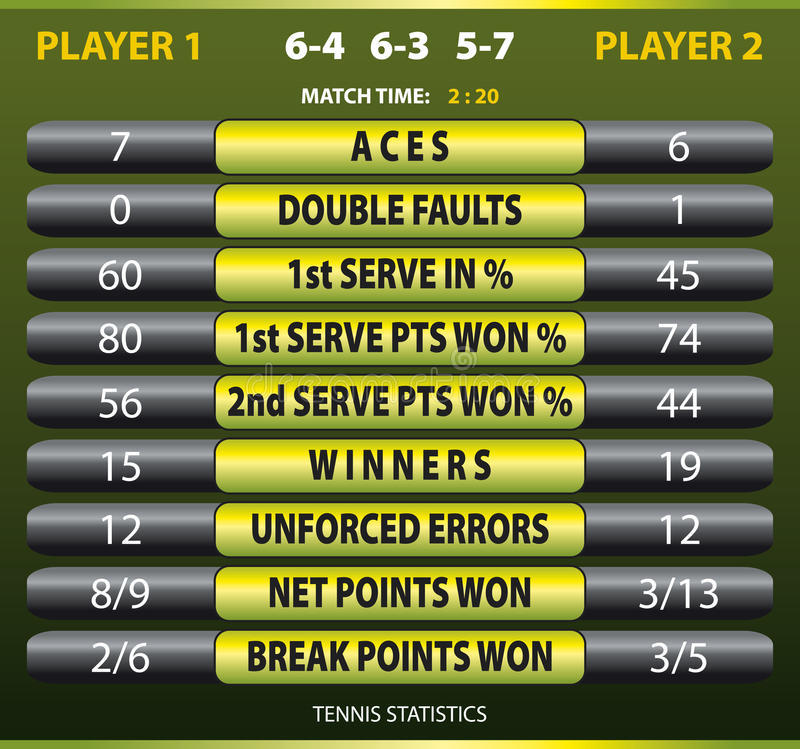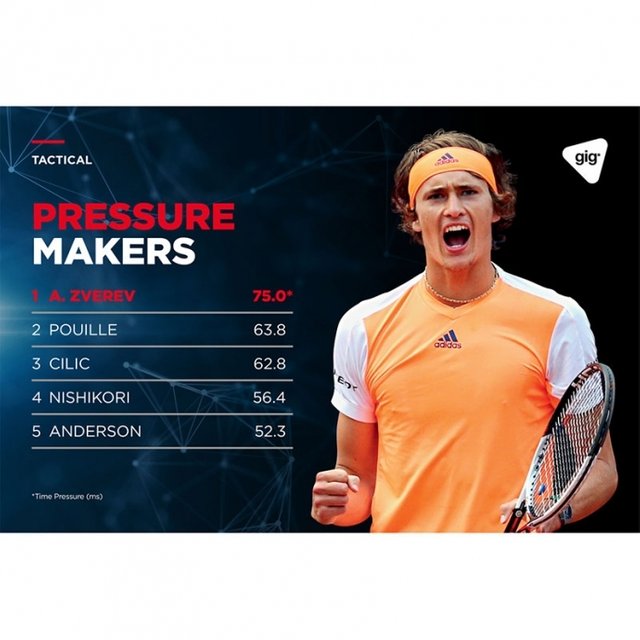Big Data Analytics in Tennis
In the recently concluded Australian Open 2018, a company called Game Insights Group (GIG) showcased a number of Big Data Analtyics based innovations that were interesting to say the least. Before we analyze their innovations, a little background on tennis analytics is in order. Compared to other sports, statistical analysis in Tennis has always been very low. The tournaments and television broadcasters have always stuck to the same statistics which looks like this.

One of the recent innovations in Tennis to become mainstream is the Hawkeye technology. Upto 10 cameras are positioned at different places high above the court to capture the position of the ball in 3D and to map out the ball trajectory with a margin of error of 2.6mm. Because Hawkeye technology is now rolled out in all ATP and WTA matches, there is another unexpected benefit opening up possibilities for other types of analytics. Along with the ball trajectories, players’ movement is also captured. Enter Game Insights Group. By analyzing these huge datasets, they have come up with newer metrics like which player works the hardest, who creates more pressure for the opponent and of course a win predictor based on how well two players match up uniquely.
To identify who works the hardest for a point, the video footage containing the footwork of players is analyzed. How well a player positions oneself to play each point, how fast or farther one runs for a single point and of course, based on their lower body movement, how much calorie a player burns for each point is calculated. Weighting all these values, they arrive at the hardest working player for each point. For those interested, it is Andy Murray who spends most energy for a single point.
How do they identify which player creates most pressure on opponents? According to Dr. Macher Reid, Head of Innovation at Tennis Australia, “If you just look at ball speed, that doesn’t take into account where you’re standing on the court,” he explains. “Take Rafael Nadal – he often parks himself way back from the baseline, but he cranks the ball. Then there’s someone else, like a Bernard Tomic, who might be further up the court but doesn’t generate anything like the ball speed. What you’re feeling as an opponent is quite a bit different”. The players with the least time to hit the shots are feeling the pressure and the ones with most time are putting pressure on opponents.

Of course, the data currently does not capture upper body movements which GIG hopes to research further.
Since tennis is an individual sport, the days when any player can use similar analytical tools to improve his or her game is not farther away. What exciting times we live in.
Thanks, some interesting points.
Yeah, thank you :)
Nicely explained every aspect in data analytics
Thank you